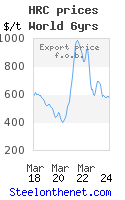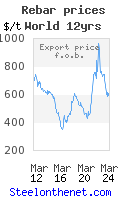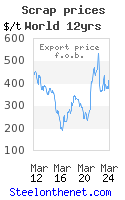Tata Steel Port Talbot - the road to viability
We have previously discussed in this blog some of the issues surrounding the future of Port Talbot in south Wales Wales
The problem
The biggest problem at present is that Port Talbot is reportedly losing somewhere between GBP £0.5 million - £1 million per day. With production of finished steel products at Port Talbot of the order of 3 million tonnes / year, this translates (assuming losses of just £0.5m per day) into a loss of ~£60/tonne. With weak balance sheets across the steel industry pretty much worldwide, few steel companies today are able to sustain loss-making at this level for very long.
Suggestions for business turnaround
In recent weeks, a number of apparent solutions for the turnaround of Port Talbot have been mentioned in the international press. These include business rate reductions, employment cost reductions and even reductions in energy costs. Let us examine these ideas in turn.
(i) Business rate reductions
Many industry commentators note the cripplingly high business rates that sometimes apply in the UK Port Talbot currently pays ~£10m/year in business rates. On a sales volume of ~3 million tonnes, this cost amounts to roughly £3 / tonne. If the objective is to improve profitability by £60/tonne, it is clear that substantial reductions of business rates will do little to restore viability at Port Talbot .
(ii) Employment cost reductions
(iii) Energy cost reductions
There is much discussion concerning the relative cost of electricity prices in the UK as compared to the continent; many observers consider that electricity costs in the UK are double those in other parts of Europe . Depending a little on the exact steel product, our own assessment is that Port Talbot ’s electricity costs are currently in the £12.50-£17.50 / tonne range. If we ignore the fact that much of this electricity can be generated from hot gas that is generated from carbon-based inputs such as coal and coke, and further assume an average electricity cost of £15/tonne of finished steel, it is clear that whilst halving of these costs might save ~£7.50 per tonne, this level of cost saving is also very far from the profit improvement target of £60/t discussed above.
The solution
What then is the solution for Port Talbot if the objective is a profit improvement of £60/tonne, when measures such as business rate reductions, employment cost reductions and reductions in electricity costs can at most generate savings of £3, £3.50 and £7.50/tonne respectively (or just £14/tonne in total)?
MCI’s view is that the only solution is to stop production of liquid steel in south Wales , and to ship in steel slab (for further downstream processing into hot and cold rolled and coated steel at Port Talbot ) from one of the lowest-cost producers of these steels.
The chart below illustrates Port Talbot ’s slab production costs on the world cost curve, as at Q1 2016.
Readers of this blog post will notice that the difference in slab production cost between the world’s lowest cost producer and the Port Talbot works is ~$110/tonne. If we assume a transport cost via sea freight of ~$35/tonne, the total cost saving at Port Talbot of purchasing rather than making slab works out at $75/tonne or ~£52 / tonne. With some small reduction in business rates or employment costs or energy prices, Port Talbot should therefore be able to achieve a profit improvement of £60/tonne and thus attain viability, if it can source low cost slab.
Next steps
Do we have any other evidence that such a strategy would be viable for Port Talbot ? Who would be the best foreign partners for sourcing the low-cost slab (and do they have the capability for immediate slab supply)? How do we calculate the production cost savings and freight costs?
For further information, please contact us.
Andrzej M Kotas
Managing Director
Metals Consulting International Limited
Website: www.steelonthenet.com
Labels: MCI, Metals Consulting International, Port Talbot, restructuring, save our steel, steel restructuring, Tata Steel, Tata Steel Europe, UK steel crisis, UK steel restructuring, viability














0 Comments:
Post a Comment
<< Home